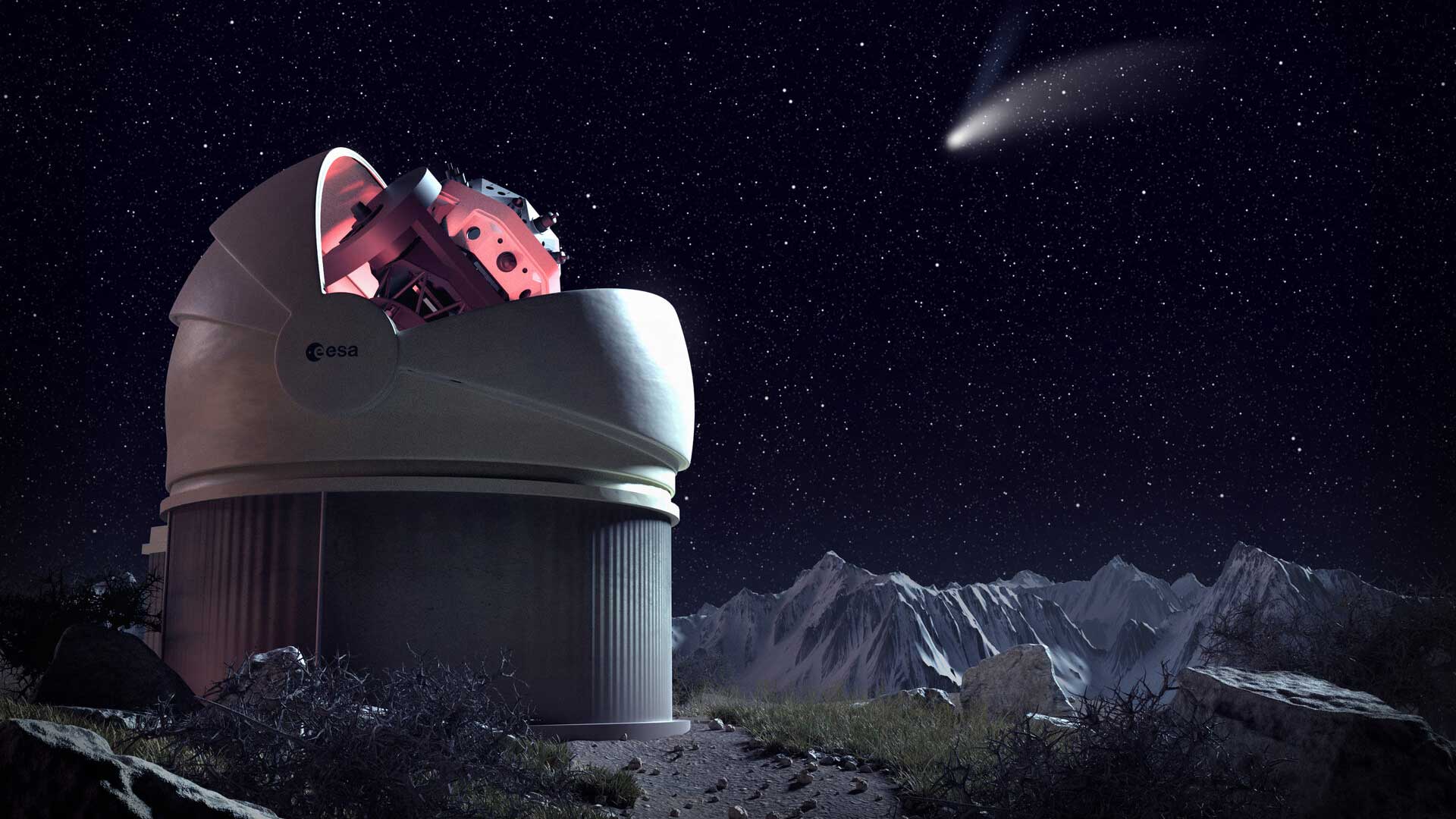
An Italian court has given the green light to ESA and ASI to continue the construction of the first FlyEye observatory, rejecting an appeal by environmental associations.
In late 2018, the European Space Agency (ESA) signed an agreement with the Italian space agency ASI to build the first FlyEye telescope atop the 1,865-metre Monte Mufara mountain on the island of Sicily.
FlyEye is a planned network of four observatories positioned around the world. Once the FlyEye network is operational, it will be utilized by ESA Space Security Programme teams to identify new near-Earth objects that could potentially pose a threat to Earth.
Earlier this year, environmental associations Club Alpino Italiano, Legambiente Sicilia, LIPU, and WWF Sicilia appealed the decision to build the telescope on the slopes of Monte Mufara. In early September, just days before a ceremony to lay the building’s first stone, the Regional Administrative Court of Sicily accepted a request by the environmental associations to suspend work until a decision on their appeal could be concluded.
On 25 September, the Regional Administrative Court of Sicily published a judgment that rejected the appeal, greenlighting the observatory’s construction to continue. The court’s decision to reject the appeal was primarily based on the fact that the environmental associations had waited too long to file it.
“Considering that, in the preliminary review typical of the precautionary phase – and regardless of the other procedural objections raised – the validity of the objection regarding the inadmissibility due to the late challenge of the SUAP decision of May 23, 2023, prevents the examination of the merits of the case.”
For its part, the European Space Agency appeared before the court on 24 September to assert its immunity from jurisdiction and execution based on Article 4 of Annex 1 of the ESA Convention, which was signed in May 1975 and ratified and enforced in Italian law in June 1977. Under Annex 1, ESA enjoys several key immunities: its buildings and archives are protected from intrusion, it is shielded from legal action and asset seizure, and it is exempt from taxes. However, in this case, the agency’s immunity privileges were not required.
In a statement, the environmental associations explained that they were assessing further action, including an appeal to the European Court of Justice.
Earlier this year, FlyEye-1 was expected to be completed by the end of 2025. However, with the delays caused by work at the site being halted, its inauguration has likely slipped a few months. The overall planned investment in the observatory is €12 million.
More about the FlyEye network
FlyEye is named after its design which mimics that of a fly’s compound eye, with a single mirror splitting incoming light into separate channels which are imaged by 16 separate cameras. The design enables the telescope to observe a greater field of view. Once operational, the FlyEye network will be able to conduct nightly surveys of the entire sky.
FlyEye-2 will be built in the Southern Hemisphere and is expected to be operational by 2028.




